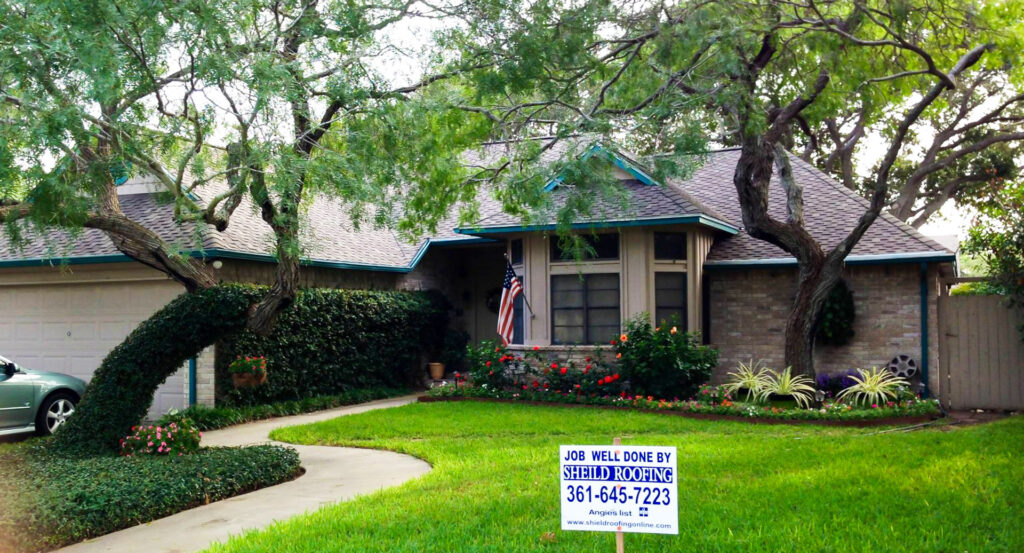Are you a homeowner in San Antonio looking to replace your roof? With the city’s hot and humid climate, it’s important to choose a roofing material that can withstand the elements and keep your home cool. But with so many options available, it can be overwhelming to decide which one is right for you.
In this article, we’ll guide you through the process of selecting the perfect roofing material for San Antonio’s climate. We’ll discuss the durability and longevity of different materials, their energy efficiency and insulation properties, as well as cost and maintenance considerations. By the end of this article, you’ll have all the information you need to make an informed decision and ensure your home is protected for years to come. So, let’s get started!
Understanding San Antonio’s Climate
San Antonio’s climate can be tricky to navigate, so it’s important to understand its unique weather patterns. The city experiences hot summers with temperatures reaching up to 100 degrees Fahrenheit. The winters are mild with temperatures averaging around 50 degrees. However, there can be sudden drops in temperature during the winter months, so it’s important to be prepared for the occasional cold snap.
Rainfall patterns in San Antonio are also unique. The city experiences a semi-arid climate with the majority of its rainfall occurring in the spring and fall. Summers are typically dry, and droughts are not uncommon. It’s important to consider these rainfall patterns when selecting a roofing material that can withstand the sudden influx of water during the wet seasons and the long periods of drought during the summer months.

Durability and Longevity of Different Roofing Materials
When choosing a roofing material, you’ll want to consider how long it will last and how durable it is to withstand the elements. San Antonio’s climate can be unpredictable, with high winds, heavy rain, and intense heat. You need a material that can handle all of these conditions while also being environmentally friendly.
One option to consider is metal roofing. It is highly durable and weather-resistant, making it an excellent choice for San Antonio’s climate. Metal roofs can last up to 50 years or more, and they are also recyclable, reducing their environmental impact. Another option is asphalt shingles, which are also durable and weather-resistant. They have a lifespan of 20-30 years and are also recyclable. When selecting a roofing material, it’s essential to consider both the durability and environmental impact to ensure you have a long-lasting and sustainable solution for your home.
Energy Efficiency and Insulation
Looking for ways to save on your energy bills? Consider installing energy efficient roofing materials. Metal or asphalt shingle roofs are great options that can provide excellent insulation for your home. These materials can help reduce your energy consumption by keeping your home cool in the summer and warm in the winter, while also minimizing the amount of heat that escapes through your roof.
When it comes to insulation, there are a variety of options available for energy efficient roofing materials. Some popular types of insulation include fiberglass, cellulose, and spray foam. Each has its own pros and cons, but all can help keep your home comfortable and energy-efficient. By choosing the right roofing material and insulation, you can save money on your energy bills and reduce your carbon footprint.
Cost and Budget Considerations
It’s important to consider cost and budget when choosing energy efficient roofing materials for your home in San Antonio. While it may be tempting to go for the most expensive and high-end option, it’s important to remember that installation expenses and ongoing maintenance costs can add up quickly.
One way to make a cost-effective decision is to compare the different materials available. For example, metal roofs may have a higher upfront cost, but they can last up to 50 years and require very little maintenance. On the other hand, asphalt shingles may be more affordable initially, but they may need to be replaced every 15-20 years. By weighing the pros and cons of each material, you can make an informed decision that fits your budget and long-term goals.
Maintenance Requirements
To keep your energy efficient roof in top condition, you’ll need to perform regular maintenance tasks such as cleaning gutters and inspecting for damage. Preventative measures such as trimming nearby trees and removing debris can also help prevent damage from occurring. It’s important to stay on top of maintenance tasks to avoid more costly repairs down the line.
If you’re not comfortable performing maintenance tasks yourself, it’s always a good idea to seek professional assistance. A roofing professional can perform a thorough inspection and identify any potential issues before they become major problems. They can also provide guidance on the best maintenance practices for your particular roofing material, ensuring that your roof remains in excellent condition for years to come.

Choosing a Style and Color That Matches Your Home’s Aesthetic
When choosing a style and color for your energy efficient roof, it’s important to think about the overall aesthetic of your home. This will ensure that your roof matches the style and color scheme of your home, creating a cohesive and visually appealing look. Consider the color psychology of the colors you choose, as they can have a big impact on the overall feel of your home. For example, blue can create a calming effect, while red can evoke feelings of passion and energy.
Additionally, it’s important to stay up to date on roofing trends when selecting your roofing material. This will not only ensure that your home looks modern and stylish, but it can also increase the resale value of your property. Look for styles and colors that are popular in your area, as this can also help your home blend in with the surrounding homes and neighborhood. By taking the time to choose the perfect style and color for your roofing material, you can create a beautiful and functional addition to your home.
